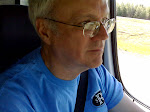






Yesterday morning we went back to Salisbury Cathedral to see a few things we’d missed. Inside the cathedral is a remarkable 14th century mechanical clock that rings a Cathedral bell on the hour.
Next we drove the short distance from Salisbury to Stonehenge. We parked amidst a throng of vehicles and fellow tourists, paid our fee and followed the queue to the site. The stones themselves are roped off, and you can only experience them visually. I must confess that I was a bit underwhelmed. Somehow in every picture I’d ever seen of Stonehenge the stones appeared vastly larger. Granted it must have taken enormous energy, commitment, coordination, ingenuity to move the stones to the site and erect them several millennia ago. But having been able to walk amongst the Stennis Standing Stones and the Brogdar stones on Orkney (with far, far fewer other people around) I found myself, embarrassingly, paraphrasing Ronald Reagan, “If you’ve seen one henge, you’ve seen them all.” I felt I had become the jaded traveler. For the only time so far on this trip I felt that I had “done” a place rather than “visited” it. “Oh, yea, we did Stonehenge. Yeah. Ah, hah.”
We then drove on to Portsmouth. Our first stop was the Historic Dockyards to see several English national treasures. The first was the Victory, Lord Nelson’s flagship, upon whose deck he was mortally wounded during the battle of Trafalgar. The ship is immaculately kept and we took two hours touring it. We also got to see the significant remains of the Mary Rose, one of the first purpose-built English warships, and the nearly 500 year-old favorite ship of Henry VIII. It is being soaked with special preservative chemicals in a purpose built chamber. When an English fleet sailed from Portsmouth to engage a French fleet, the Mary Rose the Mary Rose, with her gun ports open, was caught by a harsh wind and sank 2 km offshore, trapping most of the 400 crew members. We got to touch and smell some rope salvaged from the wreck. It had been washed with plain water and in no other way preserved, and you could still smell the jute and the pitch on it.
Our digs are in Old Portsmouth, right down on the waterfront, and we have enjoyed watching ships pass by from our window and from our walk along the shore. We ate at a waterfront pub where we met a delightful Scottish couple, Lynn and Len, who have been living near Portsmouth for forty years. They told us of many Portsmouth sites we won’t have time to take in on this trip.
Today is a major transition. After we visit Winchester Cathedral we will return the hire car at Heathrow Airport and take the subway into London. So we will give up a measure of freedom in our travel for the freedom from driving in insane traffic.


No comments:
Post a Comment